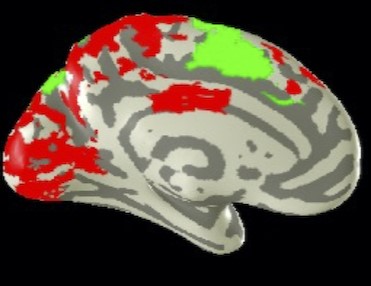
Does the functional organization of the brain connectivity of the visual motion areas depend on the loss of form vision? We report large-scale reorganization in low vision individuals following a unique form of non-visual spatial navigation training. Participants completed five sessions of the haptic Cognitive-Kinesthetic Memory-Drawing Training with raised-line tactile navigational maps. Pre- and post-training, whole-brain fMRI scans were conducted while participants (i) haptically explored and memorized raised-line maps and then (ii) drew the maps from haptic memory while blindfolded. Granger Causal connectivity was assessed across the network of brain areas activated during these tasks. Before training, the participants’ hMT+ connectivity in low vision was predominantly top-down from the sensorimotor pre- and post-central cortices, supplementary motor areas, and insular cortices, with only weak outputs to occipital and cingulate cortex. Large-scale reorganization of the connectivity strengthen the pre-top-down inputs to hMT+, but also dramatically extended its outputs throughout the occipital and parietal cortices, especially from right hMT+. These results are consistent with the fact that low vision individuals have a lifetime of visual inputs to hMT+, and it may become one of the principal perceptual inputs as their form vision is reduced, making it a key source of navigational information during the unfolding of the drawing trajectory. When forced to perform the spatiomotor task of haptic drawing without vision, however, hMT+ becomes a key conduit for signals from the executive control regions of prefrontal cortex to the medial navigational network and occipito-parieto-temporal spatial representation regions. These findings uncover novel forms of brain reorganization that have strong implications for the principles of rapid learning-driven neuroplasticity.
Lora T Likova, Kristyo N Mineff, Zhangziyi Zhou, Michael Liang, Christopher W Tyler, "Training-induced Reorganization of the Cross-modal Connectivity of the Human Motion Area in Severe Low Vision" in Electronic Imaging, 2025, pp 201-1 - 201-8, https://doi.org/10.2352/EI.2025.37.11.HVEI-201
 Find this author on Google Scholar
Find this author on Google Scholar Find this author on PubMed
Find this author on PubMed